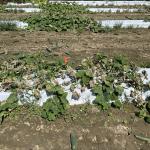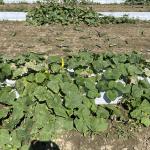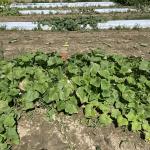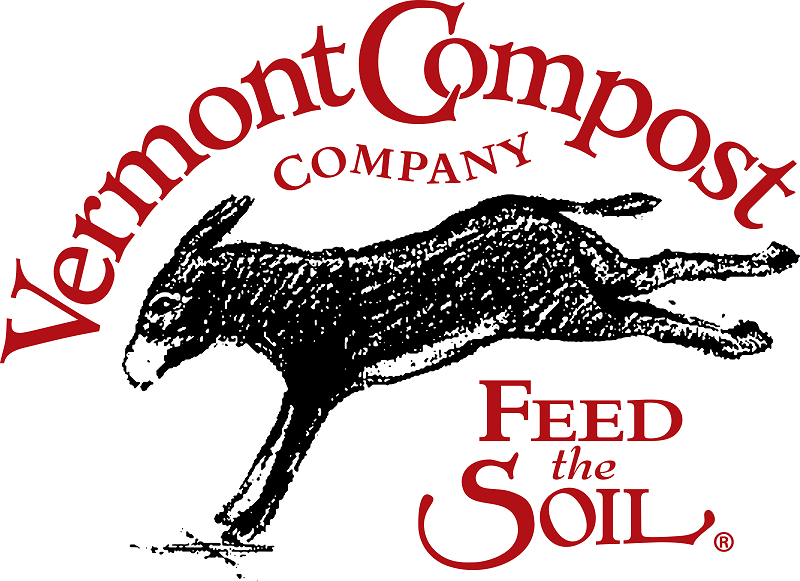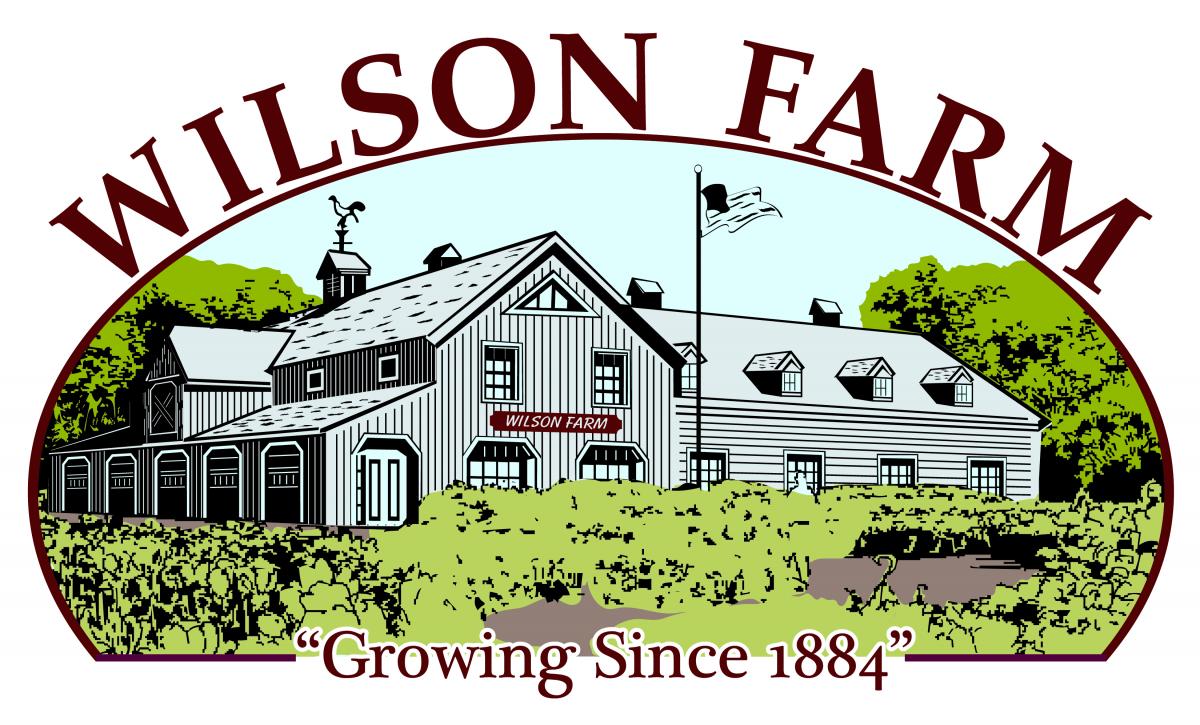To print this issue, either press CTRL/CMD + P or right click on the page and choose Print from the pop-up menu.

Crop Conditions
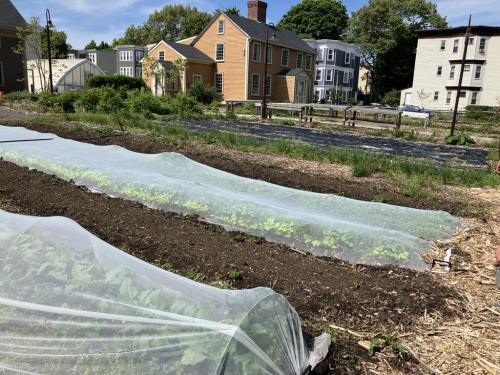 Welcome to the cucurbit issue—three articles about cucurbits, coming up…!
Welcome to the cucurbit issue—three articles about cucurbits, coming up…!
Well, it finally warmed up. Cash crops, cover crops, and weeds alike are taking off, and folks are busy cultivating and planting out hot crops – tomatoes, peppers, eggplant, cucumbers. It’s almost time to plant sweet potatoes. Greens, herbs, radishes, and turnips are being harvested now, and the earliest summer squash is starting to fruit. It’s been relatively dry, and people have turned on irrigation to germinate small-seeded crops. Plant sales boomed last week thanks to some nice weather, and folks are gearing up for CSAs to start in June. Growers are increasingly finding potato aphids in high tunnel crops. We’ve been working on managing them using biocontrols at one farm, and it is definitely a challenge! Potato aphids are larger than green peach aphids and are often pink. See our Aphid Biocontrol in High Tunnels article for ID help. We’d love to hear your stories about successfully or unsuccessfully managing potato aphids in tunnels, in any crop—what has worked, what hasn’t. Shoot us an email at umassveg@umass.edu or call us at 413-577-3976.
Pest Alerts
Alliums
 Downy mildew was diagnosed on onions in Franklin Co. this week. (Downy mildew of onion affects only alliums and is a different pathogen than the downy mildews of cucurbits, basil, and spinach). This disease causes 1-2-inch long, pale-green, oval-to-round spots that expand and coalesce, girdling leaves and causing them to collapse. As the pathogen progresses, it produces fuzzy gray sporulation that becomes purple. The pathogen survives the winter in fall-planted overwintering onions or volunteer onion plants as oospores (thick-walled survival spores) or as mycelium in stored bulbs, seed, or crop residue. Infected bulbs become soft and shriveled, some sprouting prematurely. The pathogen directly infects roots of new plants in the spring, which become systemically infected and produce spores that spread to other plantings. Fungicides can effectively control downy mildew if applied preventatively. See the onion, scallion, and shallot or leek disease control section of the New England Vegetable Management Guide for labeled materials.
Downy mildew was diagnosed on onions in Franklin Co. this week. (Downy mildew of onion affects only alliums and is a different pathogen than the downy mildews of cucurbits, basil, and spinach). This disease causes 1-2-inch long, pale-green, oval-to-round spots that expand and coalesce, girdling leaves and causing them to collapse. As the pathogen progresses, it produces fuzzy gray sporulation that becomes purple. The pathogen survives the winter in fall-planted overwintering onions or volunteer onion plants as oospores (thick-walled survival spores) or as mycelium in stored bulbs, seed, or crop residue. Infected bulbs become soft and shriveled, some sprouting prematurely. The pathogen directly infects roots of new plants in the spring, which become systemically infected and produce spores that spread to other plantings. Fungicides can effectively control downy mildew if applied preventatively. See the onion, scallion, and shallot or leek disease control section of the New England Vegetable Management Guide for labeled materials.
Asparagus
Asparagus beetle larvae are active now, feeding on spears. They will fall to the soil to pupate, and the next generation of adults will emerge to feed on ferns this summer. Most growers avoid chemical treatment during harvest because preharvest intervals interfere with daily harvesting. Pesticide treatment of ferns postharvest is warranted if 50-75% of plants are infested. See the asparagus insect control section of the New England Vegetable Management Guide for labeled materials.
Brassicas
 Imported cabbageworm eggs were observed in Suffolk Co. this week. Adult ICW are white butterflies that are commonly seen fluttering above brassica fields. Eggs are yellow and laid singly, on-end, on undersides of brassica leaves. The resulting caterpillars are green and slightly fuzzy and can quickly cause significant feeding damage in brassica crops. Once eggs start to hatch, scout crops weekly and apply a pesticide to heading crops (e.g. cabbage, broccoli, cauliflower) if 20% or more are infested before heading. Use a 10-15% threshold for leafy brassicas and heading brassicas after head formation. For labeled materials, see the appropriate crop insect control section of the New England Vegetable Management Guide. For organic growers, Bt (e.g. Dipel) is the most effective material. If flea beetles are also present, spinosad (e.g. Entrust) will control both, Use a spreader-sticker to help pesticide spray solutions stick to waxy brassica leaves.
Imported cabbageworm eggs were observed in Suffolk Co. this week. Adult ICW are white butterflies that are commonly seen fluttering above brassica fields. Eggs are yellow and laid singly, on-end, on undersides of brassica leaves. The resulting caterpillars are green and slightly fuzzy and can quickly cause significant feeding damage in brassica crops. Once eggs start to hatch, scout crops weekly and apply a pesticide to heading crops (e.g. cabbage, broccoli, cauliflower) if 20% or more are infested before heading. Use a 10-15% threshold for leafy brassicas and heading brassicas after head formation. For labeled materials, see the appropriate crop insect control section of the New England Vegetable Management Guide. For organic growers, Bt (e.g. Dipel) is the most effective material. If flea beetles are also present, spinosad (e.g. Entrust) will control both, Use a spreader-sticker to help pesticide spray solutions stick to waxy brassica leaves.
We’re seeing cabbage root maggot damage now, as well as fresh eggs, but we’re nearing or just past the flight of the overwintered generation. There are several generations of CRM, but this spring generation and the last fall generation are generally the most damaging, because high soil temperatures will kill the eggs in most fields. So, brassicas going in the ground now are largely safe from damaging infestations and covers can be removed. Most pesticides labeled for CRM control need to be soil-applied at planting, so there are limited options for controlling infestations in crops that are already in the ground. Mustang Maxx (zeta-cypermethrin) can be applied to brassica root crops after planting and Radiant (spinetoram) can be applied to head, stem, and leafy brassicas up to 3 times after planting. Organic growers can apply Entrust (spinosad) to head, stem, and leafy brassicas up to 3 times after planting. Azera (azadirachtin + pyrethrins) has been discontinued but is also labeled for us in all brassica crops against CRM and growers can use up existing stock.
Cucurbits
Striped cucumber beetles are emerging from overwintering sites at field edges now, and are common in high tunnels now and making their way into cucurbit fields also. SCB can cause severe feeding damage on cucurbits, especially before the 5-leaf stage. The beetles also vector a bacterial pathogen that colonizes cucurbits’ water-conducting tissue and causes bacterial wilt. Row cover will exclude the beetles if applied before they colonize the crop—remove cover at flowering to allow for pollination. See the article in this issue for more details, including cultural and chemical controls.
Nightshades

 Botrytis gray mold was observed on high tunnel tomatoes this week in Hampshire Co. This is the same pathogen that causes gray mold on strawberry fruit and lettuce and many other crops. Botrytis is a weak pathogen that can only infect dead or dying tissues; in high tunnel tomatoes, it usually colonizes a plant via leaf margins that have died back due to nutrient deficiencies, pruning wounds, or senescing flowers. The pathogen produces fuzzy gray sporulation on leaf and stem lesions. As lesions expand, they often develop concentric rings. Botrytis can also cause ghost spot on green tomato fruit—a light-colored ring in the fruit skin. The disease is favored by high humidity. Control measures include pruning to increase airflow and venting as much as possible to reduce humidity. Removing badly affected plant tissue can help reduce the source of inoculum.
Botrytis gray mold was observed on high tunnel tomatoes this week in Hampshire Co. This is the same pathogen that causes gray mold on strawberry fruit and lettuce and many other crops. Botrytis is a weak pathogen that can only infect dead or dying tissues; in high tunnel tomatoes, it usually colonizes a plant via leaf margins that have died back due to nutrient deficiencies, pruning wounds, or senescing flowers. The pathogen produces fuzzy gray sporulation on leaf and stem lesions. As lesions expand, they often develop concentric rings. Botrytis can also cause ghost spot on green tomato fruit—a light-colored ring in the fruit skin. The disease is favored by high humidity. Control measures include pruning to increase airflow and venting as much as possible to reduce humidity. Removing badly affected plant tissue can help reduce the source of inoculum.
Solanaceous flea beetles are out now and feeding on eggplant and tomato plants. This is a different species of flea beetle than the ones that feed on brassicas. Treat newly set transplants if they have 2 flea beetles per plant, seedlings 3" to 6" tall if they have greater than 4 beetles per plant, and plants over 6" tall if they have 8 beetles per plant. Most insecticides registered to control CPB, including spinosad, will control FB. Systemics applied to the soil at transplanting may control both flea beetle and Colorado potato beetle; avoid using the same chemical group for both soil and foliar treatments.
 We saw three-lined potato beetle feeding on a tomatillo seedling this week. Despite their name, these insects will feed on potato and other solanaceous crops but strongly prefer tomatillo. Larvae resemble Colorado potato beetle larvae and, distinctively, carry a pile of their own feces on their back. Many growers choose not to treat for this pest because they are concentrated on tomatillos, which are often just grown for pick-your-own operations. Labeled materials include Radiant, Agri-Mek, and pyrethroids. Entrust is the most effective OMRI-listed material.
We saw three-lined potato beetle feeding on a tomatillo seedling this week. Despite their name, these insects will feed on potato and other solanaceous crops but strongly prefer tomatillo. Larvae resemble Colorado potato beetle larvae and, distinctively, carry a pile of their own feces on their back. Many growers choose not to treat for this pest because they are concentrated on tomatillos, which are often just grown for pick-your-own operations. Labeled materials include Radiant, Agri-Mek, and pyrethroids. Entrust is the most effective OMRI-listed material.
Sweet corn
Early corn is out from under plastic and is a foot tall, and the first uncovered plantings are up. We have some corn traps set up across the state already, with more going up soon. No trap captures of European corn borer or corn earworm yet. ECB begins emerging from overwintering sites in crop residues at 374 GDDs base 50°F, and we are currently around 250 GDDs in most of the state (with Cape Cod and the islands closer to 130), so we expect to see ECB flight begin in the next few weeks. Corn earworm historically does not overwinter in the Northeast, and is instead blown northward from southern overwintering sites, arriving here in mid-July. However, pockets of overwintering populations have been identified in NY. Last year, we did not see any early CEW trap captures (which would indicate an overwintering population), but we’re trapping early again to monitor.
Multiple/Miscellaneous Crops

 Black cutworm damage was observed in beans in Norfolk Co. this week. Cutworms will feed on a wide range of crops, including most vegetable crops. Black cutworm adults are moths that generally do not overwinter in the Northeast, but could potentially overwinter in high tunnels. Usually, the moths are blown northward in the spring, arriving between March and June. Adults lay eggs on plants, preferring low-lying areas or areas that frequently flood, and fields with lots of crop residue. The larvae feed on plants before pupating in the soil. Smaller larvae feed on leaves, and larger larvae will cut plants at the base and drag them under the soil to feed, resulting in mysteriously disappearing plants. Cutworms reach plant-cutting size at 312 GDDs base 50°F—most of the state is not here yet. If you have a history of cutworm damage on your farm, scout plants for damage and dig up handfuls of dirt around damaged plants to look for gray-black caterpillars curled into a tight C-shape. Treatment with a pesticide is warranted if 1-2% (tomato and pepper) or 5% (sweet corn) of plants have damage. See our Cutworm article in the June 29, 2023 issue of Veg Notes for management recommendations.
Black cutworm damage was observed in beans in Norfolk Co. this week. Cutworms will feed on a wide range of crops, including most vegetable crops. Black cutworm adults are moths that generally do not overwinter in the Northeast, but could potentially overwinter in high tunnels. Usually, the moths are blown northward in the spring, arriving between March and June. Adults lay eggs on plants, preferring low-lying areas or areas that frequently flood, and fields with lots of crop residue. The larvae feed on plants before pupating in the soil. Smaller larvae feed on leaves, and larger larvae will cut plants at the base and drag them under the soil to feed, resulting in mysteriously disappearing plants. Cutworms reach plant-cutting size at 312 GDDs base 50°F—most of the state is not here yet. If you have a history of cutworm damage on your farm, scout plants for damage and dig up handfuls of dirt around damaged plants to look for gray-black caterpillars curled into a tight C-shape. Treatment with a pesticide is warranted if 1-2% (tomato and pepper) or 5% (sweet corn) of plants have damage. See our Cutworm article in the June 29, 2023 issue of Veg Notes for management recommendations.
Springtails were observed causing damage in beans in Norfolk Co. this week. Springtails are tiny, black insects that can look similar to flea beetles and will similarly jump away when disturbed. To distinguish them, their bodies are rounder than flea beetles’, and flea beetles will almost exclusively feed on brassicas (brassica and striped flea beetles) and solanaceous crops (solanaceous flea beetles). Springtails generally feed on decaying plant matter and are considered beneficials, but in dry conditions, they can feed on plant materials as they seek moisture. Crop damage from springtails usually occurs in May and June when crops are small and tender. Few pesticides are labeled for use against springtails in vegetable crops – Azera (azadirachtin + pyrethrins) and Pyganic (pyrethrins) are both labeled and OMRI-listed.
Two-spotted spider mites and cyclamen mites were observed in strawberries this week. Both of these mite species (as well as broad mite) have wide host ranges and will also infest many vegetable crops. They thrive in hot, dry conditions, and we often see infestations in high tunnel cucumbers, tomatoes, and peppers. Symptoms of mite infestations include stippling and leaf distortion. Two-spotted spider mites will also produce webbing on the undersides of heavily infested leaves. In peppers, heavy cyclamen and broad mite infestations can cause severe russeting on fruit. Mites can easily move from ornamental plants to vegetable crops, so control mites in ornamentals if you have them growing alongside vegetable transplants in the same tunnel. Use of overhead irrigation (or prolonged periods of rain) can help reduce populations. Avoid using broad-spectrum insecticides that will kill naturally occurring mite predators. Labeled miticides include Agri-Mek, Acramite, Movento, Oberon, Kanemite, and Portal—check labels for what crops and mite species each material is labeled for. Organic growers can apply insecticidal soap (e.g. M-Pede) and horticultural oils (e.g. Triology, Suffoil X, Golden Pest Spray Oil)—apply as soon as you notice an infestation, then apply regularly and ensure good leaf coverage.
Contact Us
Contact the UMass Extension Vegetable Program with your farm-related questions, any time of the year. We always do our best to respond to all inquiries.
Vegetable Program: 413-577-3976, umassveg@umass.edu
Staff Directory: https://ag.umass.edu/vegetable/faculty-staff
Home Gardeners: Please contact the UMass GreenInfo Help Line with home gardening and homesteading questions, at greeninfo@umext.umass.edu.
Managing Cucurbit Downy and Powdery Mildew
--written by Meg McGrath.and updated for 2024 by UMass Extension Vegetable Program.
For many years, we’ve published the results and recommendations from Meg McGrath’s annual bioassays and fungicide trials for resistance development in the cucurbit downy and powdery mildew pathogens. Meg retired last year from her position as plant pathologist at the Cornell Extension Long Island Horticultural Research and Extension Center (LIHREC). She and her work will be missed by all her colleagues and the many growers she’s helped over the years. Her fact sheets and other resources on downy and powdery mildews are still available on the Cornell Extension website, and you can find the full collection of resources from the LIHREC here. Below are Meg’s most recent downy and powdery recommendations, from 2022, with updates for 2024 by Sue Scheufele.
 Cucurbit powdery mildew (PM) is a fungal disease of cucurbit crops that begins developing in New England in mid-summer every year. The fungus produces round patches of powdery white sporulation on the tops and bottoms of cucurbit leaves and severe infections will lead to extensive defoliation, reducing yield. The similarly named cucurbit downy mildew (DM) is a different pathogen; powdery mildew is a true fungus, whereas downy mildew is a fungal-like organism called an oomycete. Downy mildew spores land on host leaves, infect and grow within the leaf, and produce fuzzy gray sporulation only on the undersides of leaves. Lesions are angular because the pathogen cannot grow across the leaf veins. Both pathogens can be transmitted over long distances by wind. Neither downy nor powdery mildew infects cucurbit fruit directly; however, leaves infected by either pathogen will die prematurely, resulting in significant yield losses and decreased fruit quality. While several of the management recommendations are the same for preventing disease spread by these organisms, the distinction is important because not all the fungicides that control powdery mildew will control downy mildew, and vice versa.
Cucurbit powdery mildew (PM) is a fungal disease of cucurbit crops that begins developing in New England in mid-summer every year. The fungus produces round patches of powdery white sporulation on the tops and bottoms of cucurbit leaves and severe infections will lead to extensive defoliation, reducing yield. The similarly named cucurbit downy mildew (DM) is a different pathogen; powdery mildew is a true fungus, whereas downy mildew is a fungal-like organism called an oomycete. Downy mildew spores land on host leaves, infect and grow within the leaf, and produce fuzzy gray sporulation only on the undersides of leaves. Lesions are angular because the pathogen cannot grow across the leaf veins. Both pathogens can be transmitted over long distances by wind. Neither downy nor powdery mildew infects cucurbit fruit directly; however, leaves infected by either pathogen will die prematurely, resulting in significant yield losses and decreased fruit quality. While several of the management recommendations are the same for preventing disease spread by these organisms, the distinction is important because not all the fungicides that control powdery mildew will control downy mildew, and vice versa.

 Also, downy mildew is caused by an obligate parasite, meaning that it must have a living host to survive. For that reason, it does not overwinter in the Northeast, where winter temperatures kill cucurbit crops. Instead, it travels north from warmer regions on storms as the season progresses. The powdery mildew pathogen, on the other hand, can produce a sexual spore in the fall that enables it to survive over winter in New England.
Also, downy mildew is caused by an obligate parasite, meaning that it must have a living host to survive. For that reason, it does not overwinter in the Northeast, where winter temperatures kill cucurbit crops. Instead, it travels north from warmer regions on storms as the season progresses. The powdery mildew pathogen, on the other hand, can produce a sexual spore in the fall that enables it to survive over winter in New England.
Powdery & Downy Mildew Management
The most important components of an effective management program for powdery and downy mildews are resistant varieties and properly timed fungicides. Both diseases develop best on the undersides of leaves, so mobile (or translaminar) fungicides are needed to achieve successful control. Resistance to certain fungicides is widespread for both pathogens; fungicide recommendations change as new resistance develops or as new products are released. Always implement a resistance management program; do not wait until there is a problem. The goal is to delay development of resistance, not manage resistant strains afterwards. Again, because downy mildew is an oomycete and not a true fungus, targeted fungicides that control powdery mildew will not control downy mildew, and vice versa. Phytophthora blight, also caused by an oomycete, will usually also be controlled by fungicides that are effective for downy mildew.
- Select resistant varieties. There are many PM-resistant varieties of many types of cucurbits available, and DM-resistant cucumber varieties available.
- Inspect crops routinely for symptoms of both powdery and downy mildew, beginning at the start of crop development. Scouting routinely for early symptoms is important to ensure targeted fungicides are applied starting at the onset of disease development. Click here to view images of symptoms of downy and powdery mildews.
- Monitoring disease outbreaks is important for determining when fungicide applications are warranted. Cucurbit plants are susceptible to downy mildew from emergence; however, this disease usually does not start to develop in the Northeast until later in crop development when the pathogen is dispersed by wind into the region. The pathogen is thought to only be able to survive over winter in southern Florida, and from there spreads northward. There has been no evidence that the pathogen is surviving between growing seasons where winter temperatures kill cucurbit crops (outdoors above the 30th latitude). Tracking occurrences and paying attention to forecasted storms can alert you to when protectant and/or targeted sprays are warranted. Sign up to receive alerts about downy mildew occurrence and routinely check the Cucurbit Downy Mildew website to know where the disease is occurring and what crops are affected or read our weekly Pest Alerts for a summary update of powdery and downy mildew outbreak status.
- Make preventive and targeted pesticide applications based on forecast and reported risk. For both powdery and downy mildews, apply protectant fungicides weekly before symptoms develop in your crop. For powdery mildew, begin these preventive sprays when crops start producing fruit or when powdery mildew is reported in the area. For downy mildew, begin when the disease has been reported in the area and weather forecasts indicate that storms may be moving in your direction. When you first detect PM in your crop by scouting, add a PM-targeted material. When the DM risk level increases in your area, add a DM-targeted material. Targeted materials will be different for PM (a true fungus) and DM (an oomycete). Rotate between FRAC groups for the targeted materials.
- Add new fungicides to the program when they become available; substitute new for older products if they are in the same FRAC group, unless efficacy data indicate they are not as effective.
Protectant materials include:
-
Sulfur: very effective, inexpensive product for PM. Has no efficacy for DM or other diseases.
-
Oils: Effective for PM but not DM. Several botanical and mineral oils are available (search Table 23 in the New England Vegetable Management Guide for “oil”).
- Chlorothalonil and copper: Effective against both PM and DM. Copper is less effective against DM than chlorothalonil or mancozeb but is effective against bacterial diseases and OMRI-approved formulations are available.
- Mancozeb: Recommended when only DM is occurring.
Powdery mildew fungicides recommendations:
When powdery mildew is present, apply targeted fungicides weekly with contact fungicides (sulfur, chlorothalonil, and oil are more effective than copper) and alternate amongst available chemistry based on FRAC Group code. It is prudent to decide now what products to use each week and have a plan in place ready to implement. Use the highest label rates to control moderately resistant isolates if present.
- Vivando (FRAC 50) can be applied up to 3 times with no more than 2 sequential applications. It is a good choice for the last application considering the long residual activity observed in the 2018 fungicide evaluation; it is also recommended to be used at other times during the season.
- DMI fungicides (FRAC 3) are also a good choice in the program, particularly for the first application. Proline is the most effective. It is also labeled for Fusarium. Crop limit is 2 applications. Procure is also very effective. It can be applied 3 times, or 4 times to direct-seeded crops when the intermediate rate is used. Trionic is a newer product, which may be more effective, but efficacy data is lacking.
- Gatten (FRAC U13) was introduced in 2018, and so is a relatively new chemistry. REI is 12 hr. PHI is 0 days. It can be applied 5 times. Activity is limited to powdery mildew. It was as effective as Vivando for managing powdery mildew on lower leaf surfaces in a fungicide evaluation conducted at LIHREC in 2019 but not in 2018.
- Luna fungicides* contain fluopyram (FRAC 7) pre-mixed with other active ingredients to yield a somewhat confusing proliferation of magical sounding products each labeled for a different set of diseases and crops – Luna Sensation (+ FRAC 3), Luna Experience (+ FRAC 11), Luna Flex (+ FRAC 3). Luna Flex has the widest range of cucurbit crops and includes a DMI (recommended) pre-mix as opposed to a QOI (not recommended due to resistance) and is therefore the recommended choice for cucurbit PM (Luna Sensation is only labeled for watermelon). Luna Flex has a 12-hour REI and a 0-day PHI and can be used twice per crop per season. Velum Prime is another fluopyram product that can be used through drip chemigation.
- Miravis Prime* (FRAC 7+12) has a 12-hour REI and a 0-day PHI and can be used twice per crop per season.
- Orondis Opti* (FRAC 49 + M05) is a pre-mix of a new chemical, oxathiapiprolin, with the protectant fungicide chlorothalonil. Use Orondis Opti (or any other FRAC 49-containing product) in no more than 33% of the applications, or a maximum of 4 applications per planting, whichever is fewer. Orondis Opti has a 12-hour REI and a 0-day PHI.
Quintec, Torino, Endura, and QoI fungicides (FRAC 3) are not recommended due to resistance.
*Newer products that are less likely to have resistance since they have not been recommended for as long
Example recommended alternations of targeted fungicides:
- 6 applications: Orondis Opti, Vivando, Proline, Vivando, Luna Flex, Vivando
- 6 applications: Proline, Vivando, Luna Flex, Vivando, Procure, Vivando
- 8 applications: Orondis Opti, Proline, Vivando, Luna Flex, Proline, Orondis Opti, Vivando, Luna Flex
Assess control achieved on the underside of leaves toward the end of the season when there is still a good canopy.
Downy mildew fungicide recommendations:
There is more information available about each material, including maximum number of sprays and application recommendations, available at Dr. McGrath’s Cucurbit Downy Mildew Management website.
Targeted fungicides below are currently recommended:
- Elumin*, Zing! or Gavel (FRAC 22): 12-hour REI and 2-day PHI
- Orondis Opti (FRAC 49 + M05): 12-hour REI and 0-day PHI
- Zampro (FRAC 40 + 45): 12-hour REI and 0-day PHI
- Omega (FRAC 29): 12-hour REI and 30-day PHI for melons and 7-day REI for cucumbers and squash.
- Previcur Flex (FRAC 28): 12-hour REI and 2-day PHI. Can be applied foliar or via drip chemigation.
- Curzate, or Tanos (FRAC 27): 12-hour REI and 3-day PHI
- Ranman (FRAC 21): 12-hour REI and 0-day PHI in the field and 1-day PHI in the greenhouse.
*Newer products that are less likely to have resistance since they have not been recommended for as long
Bold indicates cucurbit DM “A-team” products per Mary Hausbeck, pathologist at Michigan State University
Targeted fungicides below are not recommended:
- Presidio (43)
- Revus and Forum (40)
Striped Cucumber Beetle: Focus On Early Control
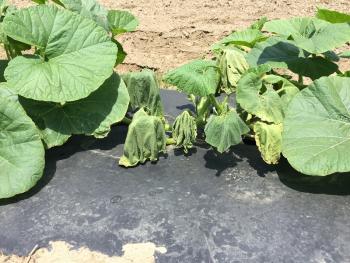
 As we head towards the end of May, striped cucumber beetles (SCB) are active and feeding on cucurbit foliage in parts of New England and have been reported in high tunnels and greenhouses in Massachusetts. Adult beetles overwinter in plant debris at field edges and move rapidly into cucurbit crops with the onset of warm weather. High tunnel and greenhouse cucumbers draw beetles first, followed by early field crops. Densities can be very high, especially in non-rotated fields or fields close to last year’s cucurbit crops. Adult beetles feed on cotyledons and young leaves, which can kill young plants causing stand reduction, delay plant growth, and reduce yield. They lay eggs in the soil near plant stems, and larvae feed on plant roots. This hidden damage reduces plant vigor and yield. Striped cucumber beetles also vector the bacterium Erwinia tracheiphila, the causal agent of bacterial wilt – this disease can be more damaging than direct feeding injury. It is important to focus on early, effective control to avoid yield impacts and protect pollinators.
As we head towards the end of May, striped cucumber beetles (SCB) are active and feeding on cucurbit foliage in parts of New England and have been reported in high tunnels and greenhouses in Massachusetts. Adult beetles overwinter in plant debris at field edges and move rapidly into cucurbit crops with the onset of warm weather. High tunnel and greenhouse cucumbers draw beetles first, followed by early field crops. Densities can be very high, especially in non-rotated fields or fields close to last year’s cucurbit crops. Adult beetles feed on cotyledons and young leaves, which can kill young plants causing stand reduction, delay plant growth, and reduce yield. They lay eggs in the soil near plant stems, and larvae feed on plant roots. This hidden damage reduces plant vigor and yield. Striped cucumber beetles also vector the bacterium Erwinia tracheiphila, the causal agent of bacterial wilt – this disease can be more damaging than direct feeding injury. It is important to focus on early, effective control to avoid yield impacts and protect pollinators.
Cultural controls
Crop rotation can reduce the impact of cucumber beetles, as can using transplants and protecting young cucurbits with row covers. In addition to insect protection, row covers also provide extra early-season heat, though it is important to remove them during times of excessive heat and at flowering to allow for pollination. Insect netting prevents beetle damage and does not trap in heat.
Scouting and thresholds: Cucurbit plants at the cotyledon and 1-to 2-leaf stages are more susceptible to infection with bacterial wilt than older plants. Thus, it is especially important to keep beetle numbers low before the 5-leaf stage. Scout frequently (at least twice per week up to SCB emergence, and for two weeks after) and treat after beetles colonize the field. Scout at least 25 plants to monitor the number of beetles and damage. Use this UMass Cucurbit Scouting Form to help keep track of what you find. The economic threshold depends on the crop. To prevent bacterial wilt in highly susceptible crops such as cucumber, muskmelons, summer squash, and zucchini, we recommend that beetles should not be allowed to exceed 1 beetle for every 2 plants. Less wilt-susceptible crops (butternut, watermelon, most pumpkins) will tolerate 1 or 2 beetles per plant without yield losses. Spray within 24 hours after the threshold is reached. Proper timing is key.
Perimeter trap cropping is another cultural control that has been shown to reduce or eliminate the need for insecticide sprays while providing effective beetle control. Trap cropping exploits the fact that SCB are more attracted to Cucurbita maxima crops (e.g. buttercup and hubbard squashes and giant pumpkins) than C. pepo or C. moschata crops (e.g. pumpkins, summer squash, butternut squash, other winter squash). Note that some specialty pumpkin varieties are C. maxima types and very attractive to beetles. Plant 1 or 2 rows of a C. maxima variety in an unbroken perimeter around the field, using 2 rows near woods or last year’s fields, and space plants no wider than the between-row spacing that is used in the main crop. Trap crops planted in rows within the main field also work as trap crops that draw beetles as they move within the field. Do not use a crop that is highly susceptible to bacterial wilt (see scouting and thresholds) in the border. Beetles must be killed in the border, either by applying foliar insecticide when beetles first arrive or using a systemic insecticide at planting. Regularly scout both borders and the main crop to assess beetle numbers. Repeat perimeter-sprays if needed to prevent influx into the main crop, and spray the main field if thresholds are exceeded.
Insect netting in high tunnels: SCB can be especially damaging early in the season in high tunnels. An increasing number of growers are experimenting with covering high tunnel sides and doorways with insect netting to exclude SCB. We’ve heard some success stories with this tactic, and some frustrations about ripping expensive netting, reduced airflow in netted tunnels, and incomplete exclusion that leads to resident high tunnel SCB populations. This tactic is best combined with crop rotation out of cucurbits in a netted tunnel so that the beetles that do make it into your tunnel one year will be unable to find food the following year. Consider using shade cloth to reduce heat in the tunnel when netting is used.
Beneficial nematodes: Some growers have expressed interest in applying entomopathogenic nematodes to the soil to control SCB. These nematodes would target the soil-dwelling larval and pupal stages of SCB. Significant research has not been done on this topic, but theoretically it would be difficult to entirely control SCB using nematodes because of the high populations of SCB in the environments surrounding a field—if the SCB larvae and pupae in the soil in a field were successfully killed, more adults will continue coming in from field edges throughout the season.
Chemical Control
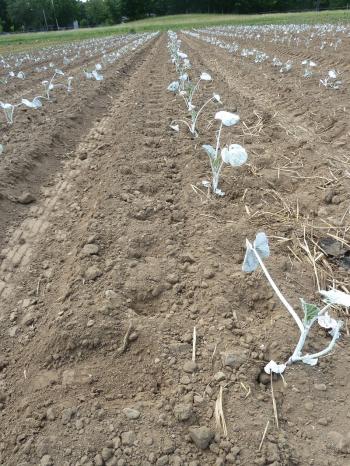 Foliar insecticides: There are a number of broad-spectrum conventional insecticides which can be used for foliar control of adult beetles, including carbamates (e.g. Lannate), pyrethroids (e.g. Warrior II, neonicotinoids, and diamides (e.g. Harvanta). All are highly toxic to bees and should only be used before bloom. Avoid using foliar neonicotinoid sprays if the same class was used as a seed or soil treatment (see below). See the cucurbit insect management section of the New England Vegetable Management Guide for more details.
Foliar insecticides: There are a number of broad-spectrum conventional insecticides which can be used for foliar control of adult beetles, including carbamates (e.g. Lannate), pyrethroids (e.g. Warrior II, neonicotinoids, and diamides (e.g. Harvanta). All are highly toxic to bees and should only be used before bloom. Avoid using foliar neonicotinoid sprays if the same class was used as a seed or soil treatment (see below). See the cucurbit insect management section of the New England Vegetable Management Guide for more details.
Systemic insecticides including neonicitinoids and diamides can be applied to seed (e.g. thiamethoxam or ‘Farmore’ treated seed) or as an in-furrow, banded, drench, or drip irrigation application to the seed/seedling root zone during or after planting/transplanting operations e.g. Verimark (IRAC group 28). These offer about 21 days of protection right at the critical establishment period and before flowering. Note specific application methods and rates on labels.
Organic insecticides: Kaolin clay (Surround WP), pyrethrin (Pyganic Crop Spray 5.0 EC), and Azera (mixture of pyrethrin and azadiractin) are labeled for SCB. Surround does not kill the beetles but instead acts as a physical deterrent. With direct-seeded crops, apply Surround as soon as seedlings emerge if beetles are active. Transplants can be sprayed or dunked before setting out in the field—consult with your organic certifier about dunking beforehand to ensure they will allow this use pattern. As with other non-systemic insecticides, Surround must be re-applied after heavy rain and on new growth. Pyganic is a contact insecticide that provides a short-term knock-down of adult beetles with no residual effect. Spinosad (Entrust) is not labeled for and is not effective against SCB.
Reducing risk to pollinators: The New England Vegetable Management Guide describes many steps that growers can take to protect honey bees and native pollinators when using insecticides. The issue of neonicotinoids in particular has received a great deal of attention in recent years. This is a group of insecticides that have a chemical structure very similar to nicotine. They have been widely used in agriculture because they are effective against a wide range of insects, have lower mammalian toxicity compared to older classes of insecticides, and because they can be absorbed by roots and moved through the entire plant, reducing the need for foliar sprays. This trait allows for applications to be made to soil or on seeds, with less exposure to humans and to natural enemies of insect pests. Neonicotinoids are highly toxic to bees, and label requirements prohibit use on blooming crops or where there are blooming weeds or borders. Additional concern about impact on bees arises because research has shown that detectable, low concentrations of neonicotinoids can move into pollen or nectar. These are present at sublethal concentrations but may affect the foraging behavior of bees or suppress their immune system. The long-term or colony effects of sublethal concentrations of neonicotinoids are difficult to assess in the field because bees from each colony travel long distances and forage in many different habitats and types of plants. In cucurbits, both native bees (e.g., squash bees and bumble bees) and honey bees visit flowers to gather both pollen and nectar and are essential to crop pollination. Research in cucurbits has shown that higher levels of neonicotinoids were found after foliar treatments and chemigated insecticides were applied during flowering. Lower levels were detected in treatment regimens that involved a single application at planting via seed treatment, a drench application to transplant trays, or transplant water treatment. Thus, growers should avoid high rates and multiple applications, especially as the crop approaches flowering.
--UMass Extension Vegetable Program
2023 Cucurbit Downy Mildew Cucumber Variety Trial
Every year, the UMass Extension Vegetable Program evaluates cucumber varieties for resistance to cucurbit downy mildew (CDM). Cucurbit downy mildew (CDM) is a devastating disease of cucurbit crops that develops annually in the Northeast. There are several strains of CDM that affect different cucurbit crops; cucumber is susceptible to all strains, so we see CDM in cucumber without fail every year. CDM is caused by Peronospora cubensis, an oomycete pathogen that overwinters in the southern US (and potentially in greenhouse cucumbers in southern Canada) and is blown northward on storms every year. It usually arrives in the Northeast around mid-August. The pathogen causes interveinal chlorosis (leaf yellowing that is trapped between the leaf veins) that is visible from the top side of the leaf, and fuzzy gray sporulation on the undersides of leaves. As the disease progresses, leaf spots coalesce and leaves eventually die completely and severe defoliation can occur.
Prior to 2004, cucumbers were bred to have resistance to CDM and farmers could easily grow cucumbers through October. However, in 2004, the pathogen overcame that resistance and breeders have been working hard to develop new resistant varieties ever since. UMass trials have helped to identify CDM-resistant varieties appropriate for New England markets, including Bristol, DMR401, NYS264, and Citadel.
| Varieties Trialed in 2023 |
|---|
| Chaperon |
| SVCS0029 |
| EWS-CUC-059 |
| EWS-CUC-060 |
| TSX-CU247AS |
| TSX-CU248AS |
| TSX-CU249AS |
| Gateway |
| Stronghold |
Cucumber seeds were sown in the greenhouse for the 2023 trial on June 15 in 50-cell flats and moved outside to harden off on July 5. Soil was amended with 130, 106, and 80 lbs/A of N, P, and K, respectively, in the form of Kreher’s pelleted chicken manure (5-4-3) prior to bed formation. Raised beds were formed and covered with 1-mil white-on-black plastic mulch with one drip irrigation line per bed. Seedlings were planted by hand into the beds on July 7, with plots consisting of 10 ft of bed with 6 plants in a single row at 18-in. spacing and 10-ft unplanted buffers between plots within a bed. Plots were arranged in a randomized complete block design, with beds on 15-ft centers, to keep varieties separate even after vine run. We measured downy mildew severity in every plot weekly, and total and marketable yield twice a week. Fruit was considered unmarketable if it was misshapen or had excessive bird or insect damage.
CDM arrived in the trial relatively late in the season but developed quickly once it arrived. The disease was first observed on August 8 on Stronghold, Gatehouse, and EWS-CUC-060, followed by the remaining varieties on August 15. Plant pathologists commonly compare disease incidence over time using a single value, called the Area Under the Disease Progress Curve, or AUDPC. A higher AUDPC value means more disease over time, and a lower AUDPC means less disease over time.
- Chaperon, SVCS0029, and EWS-CUC-059 had the lowest AUDPC values, and Chaperon and EWS-CUC-059 also had the highest marketable yields, making them good options for late summer cucumber production when DM pressure is high.
- EWS-CUC-060 had the highest AUDPC values.
- TSX-CU248AS, TSX-CU247AS, and TXS-CU249 had the lowest marketable yields, in part due to striped cucumber beetle feeding damage, which was severe on these varieties.
Click on images below to enlarge.
--G. Higgins, UMass Extension Vegetable Program
Events
Twilight Meeting at Tangerini's Farm - Millis, MA
When: June 12, 2024, 4-7pm - free childcare available!
Where: Tangerini's Spring Street Farm,139 Spring Street, Millis, MA, 02054
Registration: Free! Please register in advance, for food ordering and childcare purposes. Click here to register.
Join Tangerini Farm, the UMass Extension Vegetable Program and SEMAP for a twilight meeting!
- Steve Chiarizio of Tangerini Farm will describe the new tile drainage system and bioreactor that they installed at the farm last year with the help of Massachusetts FSIG funding. A representative from Alleghany Services, who installed the system, will also be on hand to answer questions.
- Maria Gannett, UMass Extension Weed Specialist, and Sue Scheufele, UMass Extension Vegetable IPM Specialist, will talk about sweet corn weed and insect pest management options.
Presentations 4-6 pm, followed by a light supper.
Program co-sponsored by UMass Extension and the Southeastern Massachusetts Agricultural Partnership (SEMAP)
1 pesticide recertification credit is available for this program.
Field Walk at Brookfield Farm - Amherst, MA
When: Tuesday, June 25, 2024, 4-7pm
Where: Brookfield Farm, 24 Hulst Rd., Amherst, MA 01002
Registration: Free! Please register in advance, for food ordering purposes. Click here to register.
Join Brookfield Farm, the UMass Extension Vegetable Program and NOFA/Mass for a twilight meeting!
- Kerry and Max Taylor from Brookfield Farm will describe the new well they installed last year that includes a solar pump. The well was installed with support from NRCS.
- Sue Scheufele, UMass Extension Vegetable IPM Specialist, will lead a field walk and pest scouting demonstration.
- Maria Gannett, UMass Extension Weed Specialist, will lead a weed walk and discuss weed ID, organic weed management, and the relationship between weeds and soil health.
Presentations 4-6 pm, followed by a light supper.
1 pesticide recertification credit is available for this program.
This event is supported by the Transition to Organic Partnership Program.
Rice in the Northeast Farm School
When: Thursday & Friday, June 27-28, 2024
Where: Boundbook Farm, 276 Burroughs Farm Rd., Vergennes, VT 05491
Registration: $250, plus tent fees for camping. Click here to register.
The 2-day event is an intensive introduction to farming techniques specific to the northeastern United States. Tent camping at the farm is available, but limited to 25 tents. The Farm School registration fee is $250 and tent fees are additional. Registration is limited to 75 attendees.
- How to Farm Rice: Learn how to start a rice farm with rice varieties and technology adapted to the Northeastern U.S climate, growing conditions, and farming landscape. Learn about field preparation, duck-rice systems, drip-irrigation biomulching, crop varieties, harvesting, processing, and and marketing.
- Camping and Evening Event: On-site, tent camping is available on the farm for two nights. oy the delicious local foods and entertainment on the farm, including live music, a bonfire, and early morning birdwatching,
- Network with Future Rice Farmers: Farmers and agricultural extension educators across the Northeast are improving ways to farm rice ecologically. Now is the time to create a Northeastern rice cooperative. Be part of the founding NE farmers and educators to advance peer-to-peer learning.
Field Walk at Hannan Healthy Foods - Lincoln, MA
When: Wednesday, July 3, 2024, 4-6pm
Where: Hannan Healthy Foods, 270 South Great Rd., Lincoln, MA 01773. Park in the lot by the farm stand, carpool if possible as space is limited and the stand will be open to customers at this time.
Registration: Free! Please register in advance so we can order enough food. Click here to register.
Join Eastern MA CRAFT, UMass Extension, and NOFA/Mass for a pest walk at Hannan Healthy Foods in Lincoln, MA! We will discuss how to identify and monitor some of the most prolific and problematic pests and diseases ubiquitous to organic production. Scouting and identification are the first steps towards proactive mitigation practices, learn how to see the farm with fresh eyes.
2 pesticide recertification credits are available for this program.
This event is supported by the Transition to Organic Partnership Program.
Field Walk at Astarte Farm - Hadley, MA
When: Tuesday, July 9, 2024, 4-6pm followed by pizza
Where: Astarte Farm, 123 West St., Hadley, MA 01035
Registration: Free! Please register in advance so we can order enough food. Click here to register.
Join Astarte Farm, the UMass Extension Vegetable Program and NOFA/Mass for a twilight meeting!
- Ellen and Dan from Astarte Farm will lead a tour of the farm, highlighting pollinator habitat that they've installed. The habitat was installed with funding from NRCS.
- Hannah Whitehead, UMass Extension Educator, will talk about the benefits of pollinator habitat for organic farmers.
- Sarah Burquest, UMass Lecturer and cut flower farmer, will discuss the flowers that she grows at Astarte.
1 pesticide recertification credit is available for this program.
This event is supported by and MDAR Specialty Crop Grant and the Transition to Organic Partnership Program.
Field Walk at Morning Glory Farm - Edgartown MA
When: Wednesday, July 17, 2024, 6-8pm
Where: Morning Glory Farm, Edgartown, MA
Registration: Free! Please register in advance so we can order enough food. Click here to register.
Join UMass Extension specialists Sue Scheufele and Maria Gannett for a field walk at Morning Glory Farm. We will identify current pest and weed issues in vegetable crops and discuss their management. There will be lots of time for Q&A, discussion, and dinner and refreshments will be provided.
2 pesticide recertification credits are available for this program.
This event is co-sponsored by NOFA/Mass and Martha’s Vineyard Ag Society with support from the Transition to Organic Partnership Program.
Water & Climate Change Twilight Meeting at Bardwell Farm – Hatfield, MA
When: Friday, August 2, 2024, 5-7pm, with dinner and discussion to follow
Where: Bardwell Farm, 49 Main St., Hatfield, MA 01038
Registration: Free! Please register in advance so we can order enough food. Click here to register.
Join UMass Extension and CISA for a climate-themed twilight meeting at Bardwell Farm in Hatfield, MA!
- Lisa McKeag will share findings from her recent water quality survey of farms around MA and discuss potential risks and impacts of weather and climate change and rising year-round temperatures on agricultural water quality.
- Harrison Bardwell will show off his new automated irrigation system, and discuss irrigation practices and funded projects around the farm.
- Sue Scheufele will discuss increasing pest risks caused by a hotter climate on vegetable pests including an on-farm trial for managing Phytophthora blight in peppers hosted by Bardwell Farm.
1 pesticide recertification credit is available for this program.
This event is co-sponsored by CISA as part of their Adapting your Farm to Climate Change Series.
Save the Date! UMass Research Farm Field Day
When: August 13, 2024, time TBD
Where: UMass Crop & Livestock Research & Education Farm, 89 River Rd., South Deerfield, MA
Registration: Coming soon!
Come learn about all the research being done by students and faculty across CNS and by UMass Extension on a tour of the farm. Topics include pollinator habitat, bee health and disease ecology, novel cover cropping strategies, intercropping to reduce greenhouse gas emissions, genetic basis of flowering traits in agriculture, and vegetable variety trials including heat-resistant lettuce varieties for summer production.
Twilight Meeting: Climate Impacts on Weed Management and Soil Health
When: Tuesday, October 8, 2024, 4-6pm, with a light supper to follow
Where: UMass Crop & Livestock Research & Education Farm, 89 River Rd., South Deerfield, MA, 01373
Registration: Free! Please register in advance so we can order enough food. Click here to register.
How are climate change and hotter temperatures affecting our soils? Often, practices like reducing tillage and cover cropping are recommended to improve soil health, reduce risk of topsoil loss and enhance resilience to drought and flood—practices that can also affect weed management. UMass Extension will discuss general impacts of climate change on soil health and highlight current research on updating recommendations for planting timing and overwintering survival of cover crop species in MA. Maria Gannett, UMass Extension Weeds Specialist, will relate these strategies to how they can impact weed management.
1 pesticide recertification credit is available for this program.
This event is co-sponsored by CISA as part of their Adapting your Farm to Climate Change Series.
Vegetable Notes. Maria Gannett, Genevieve Higgins, Lisa McKeag, Susan Scheufele, Alireza Shokoohi, Hannah Whitehead, co-editors. All photos in this publication are credited to the UMass Extension Vegetable Program unless otherwise noted.
Where trade names or commercial products are used, no company or product endorsement is implied or intended. Always read the label before using any pesticide. The label is the legal document for product use. Disregard any information in this newsletter if it is in conflict with the label.
The University of Massachusetts Extension is an equal opportunity provider and employer, United States Department of Agriculture cooperating. Contact your local Extension office for information on disability accommodations. Contact the State Center Directors Office if you have concerns related to discrimination, 413-545-4800.
